Forts
Raigad Fort
Raigad Fort was the capital of the Maratha Empire from 1674 to 1818. It is located on a hilltop in the Sahyadri Mountains and is considered to be one of the most important forts in Indian history. The fort is well-preserved and offers stunning views of the surrounding countryside.
Raigad Fort*, also known as Rairi or Rairy Fort, is a magnificent hill fort situated in the Sahyadri mountain range, overlooking the town of Mahad in the Raigad district of Maharashtra, India. Standing tall at an elevation of 2,700 feet (820 meters) above its base and 4,449 feet (1,356 meters) above sea level, Raigad Fort offers breathtaking panoramic views of the surrounding landscape. Its strategic location and formidable defenses made it one of the strongest fortresses on the Deccan Plateau.
Historical Significance
Raigad Fort holds immense historical significance as it served as the capital of the Maratha Empire under the legendary Chhatrapati Shivaji Maharaj. In 1674, Shivaji was crowned the king of the Maratha kingdom, and Raigad Fort became the center of his administrative and military operations. During his reign, the Maratha Empire flourished and expanded considerably, reaching a significant portion of western and central India.
Architectural Features
Raigad Fort is a testament to the architectural brilliance of the Maratha era. Its construction was overseen by Shivaji himself, alongside his chief engineer, Hiroji Indulkar. The fort’s layout is strategically designed to maximize its defensive capabilities, with multiple layers of fortification, bastions, and gateways.
Accessing Raigad Fort
Reaching Raigad Fort requires a bit of effort, but the rewards are well worth the climb. Visitors can choose to ascend approximately 1,737 steps, offering a scenic and invigorating experience. Alternatively, a convenient option is the Raigad Ropeway, an aerial tramway spanning 2,460 feet (750 meters) in length, transporting visitors to the fort in just four minutes.
Visiting Hours
Raigad Fort remains open for visitors from 9:00 AM to 5:00 PM throughout the year. The best time to visit is during the cooler months, from October to March, when the weather is pleasant and the views are particularly stunning.
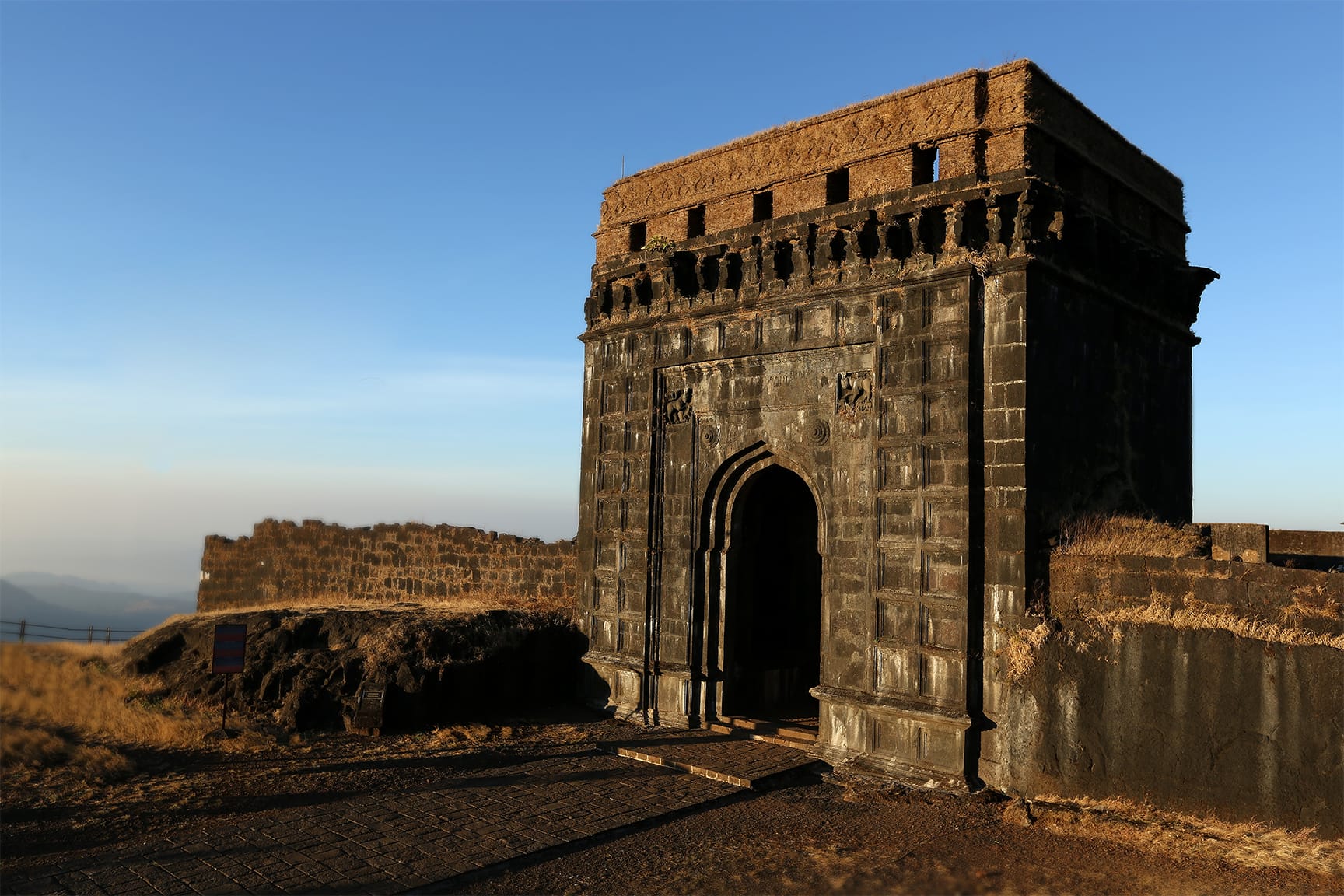
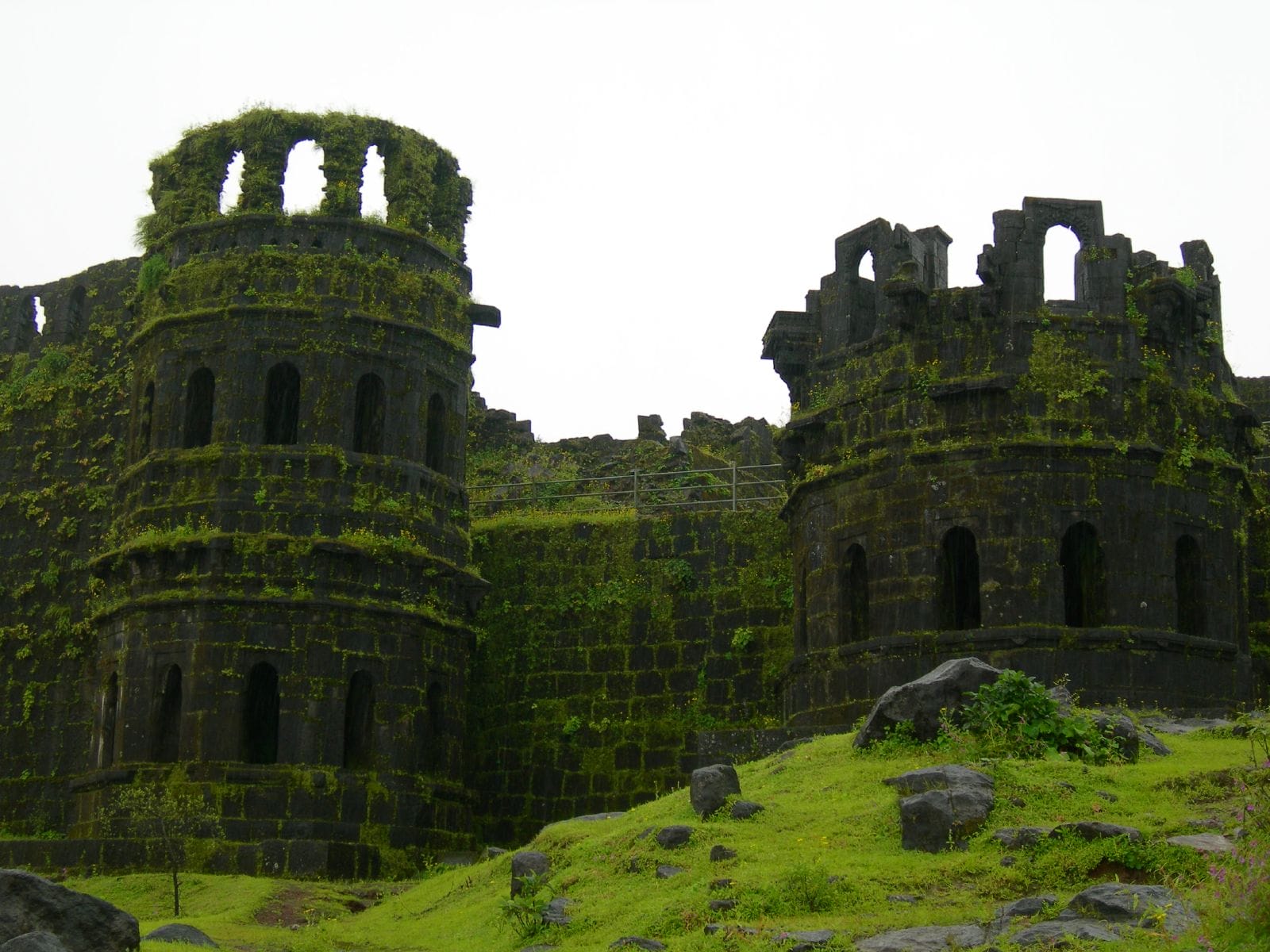
Shivneri Fort
Shivneri Fort is an ancient military fortification located near Junnar in Pune district in Maharashtra, India. It is the birthplace of Chhatrapati Shivaji Maharaj, the founder of the Maratha Empire. The fort is situated on a hilltop that overlooks the Junnar city. It is a triangular-shaped fort with seven well-defended gates. The fort is surrounded by steep cliffs on all sides, making it difficult to attack. There are many water tanks and wells within the fort complex, which provided a steady supply of water to the fort’s inhabitants.
History of Shivneri Fort
The history of Shivneri Fort dates back to the 6th century. It was initially ruled by the Mauryas, and later by the Chalukyas, Rashtrakutas, and Yadavas. In the 13th century, the fort came under the control of the Delhi Sultanate. In 1430, the fort was captured by the Adil Shahi dynasty of Bijapur. In 1630, the fort was captured by the Mughal Empire. In 1674, the fort was captured by Chhatrapati Shivaji Maharaj.
Significance of Shivneri Fort
Shivneri Fort is a significant historical landmark in India. It is the birthplace of Chhatrapati Shivaji Maharaj, a great warrior and founder of the Maratha Empire. The fort is also a symbol of Maratha pride and resistance against foreign rule.
Places to See in Shivneri Fort
- The Birthplace of Chhatrapati Shivaji Maharaj: This is the most important place to see in Shivneri Fort. It is a small room where Shivaji was born. The room is adorned with statues of Shivaji and his mother, Jijabai.
- The Badami Talav: This is a water tank located within the fort complex. It is said that Shivaji used to swim in this tank as a child.
- The Shivai Devi Temple: This is a temple dedicated to Goddess Shivai. It is believed that Shivaji’s mother, Jijabai, used to worship in this temple.
- The Chain Gate: This is a secret entrance to the fort. It is said that Shivaji used to use this gate to enter the fort during his childhood.
- The Execution Point: This is a place where prisoners were executed. It is located at the edge of the fort, overlooking the valley below.
Best Time to Visit Shivneri Fort
The best time to visit Shivneri Fort is from October to March. During these months, the weather is pleasant and there is less rainfall.

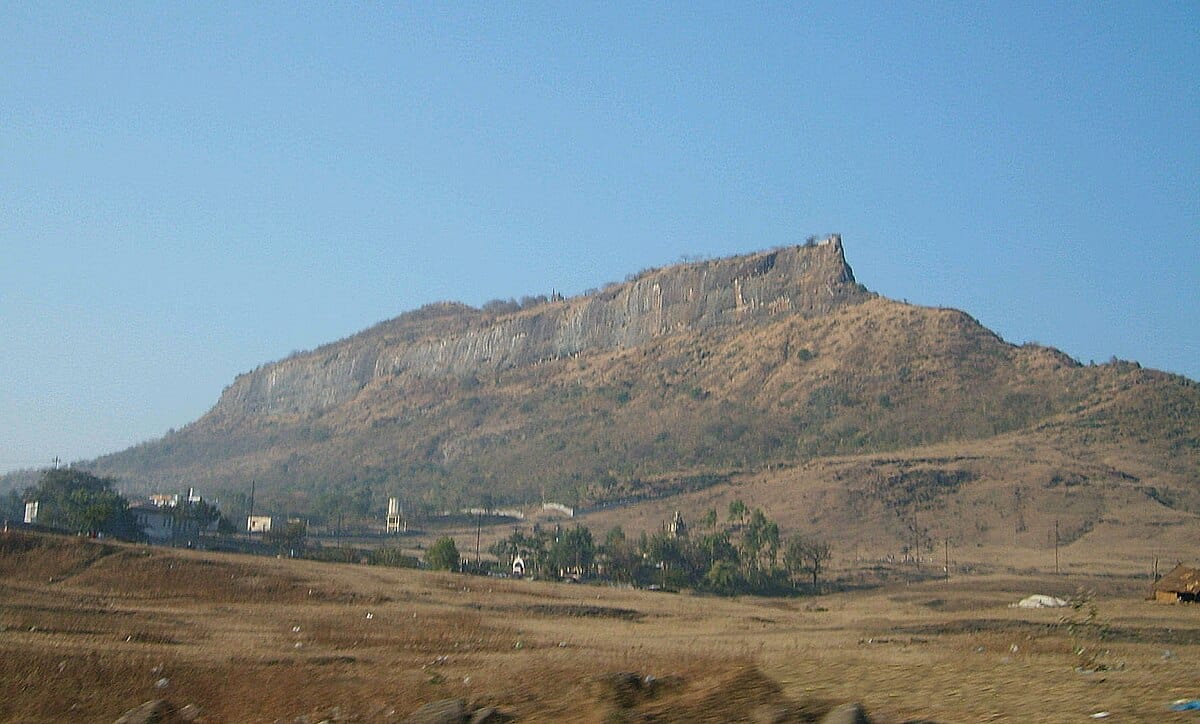
Sinhagad Fort
Sinhagad Fort, also known as Kondhana Fort, is an ancient hill fortress located approximately 30 kilometers southwest of Pune, India. It stands atop a 1,320-meter (4,330-foot) hill and offers breathtaking views of the surrounding Sahyadri Mountains. The fort has a rich history dating back to the 2nd century BCE and has witnessed numerous battles and power struggles. It is particularly renowned for the Battle of Sinhagad in 1670, where Tanaji Malusare, a brave Maratha warrior, valiantly captured the fort from the Mughal forces.
Historical Significance
Sinhagad Fort played a pivotal role in the Maratha Empire’s expansion and consolidation under the leadership of Chhatrapati Shivaji Maharaj. The fort’s strategic location and sturdy fortifications made it a key stronghold for the Marathas, enabling them to defend their territory and launch attacks against their enemies.
Architectural Features
The fort’s architecture reflects its strategic importance and defensive capabilities. It features massive stone walls, bastions, watchtowers, and gateways. The fort’s layout is intricate, with narrow passageways and hidden chambers, making it challenging for intruders to navigate.
Points of Interest
- Samadhi of Tanaji Malusare: A memorial shrine dedicated to Tanaji Malusare, who laid down his life while capturing the fort.
- Kaundinyeshwar Temple: An ancient temple dedicated to Lord Shiva, believed to have been built around the 2nd century BCE.
- Kalyan Darwaza: The main entrance gate of the fort, adorned with intricate carvings and sculptures.
- Watchtowers and Bastions: Offering panoramic views of the surrounding hills and valleys.
- Underground Water Reservoirs: Demonstrating the fort’s self-sufficiency in water management.
Best Time to Visit
Sinhagad Fort is a popular tourist destination throughout the year. However, the best time to visit is during the monsoon season (June to September) when the surroundings are lush and green. The fort is also a popular spot for night trekking, offering stunning views of the city lights below.
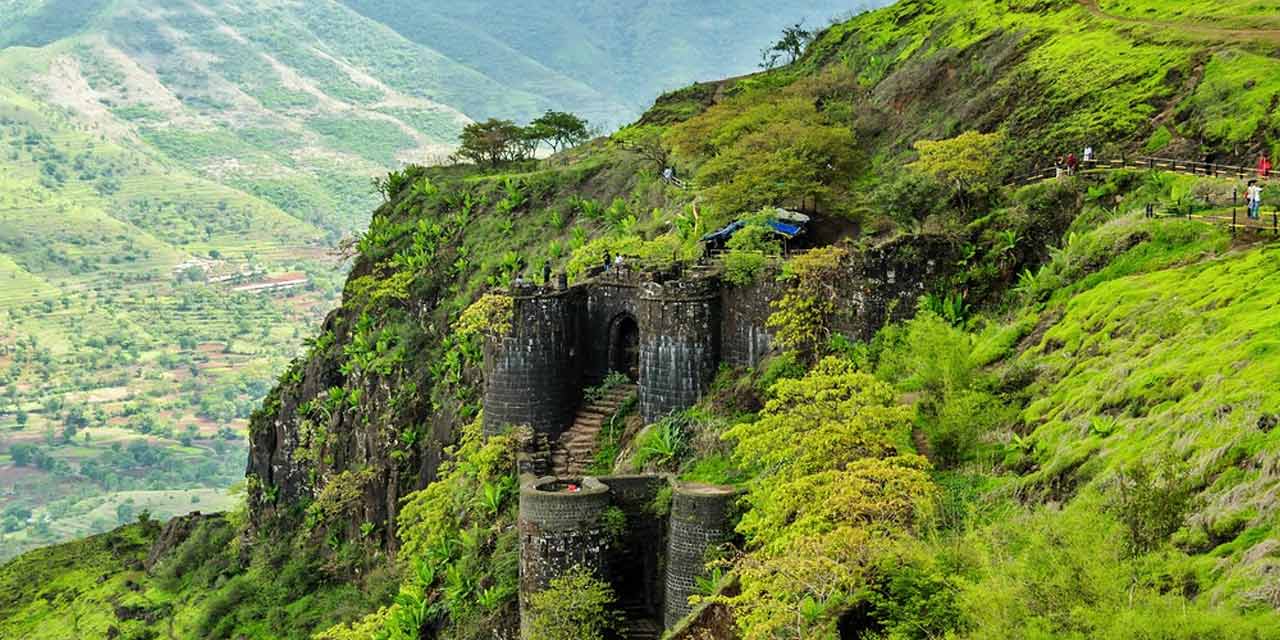
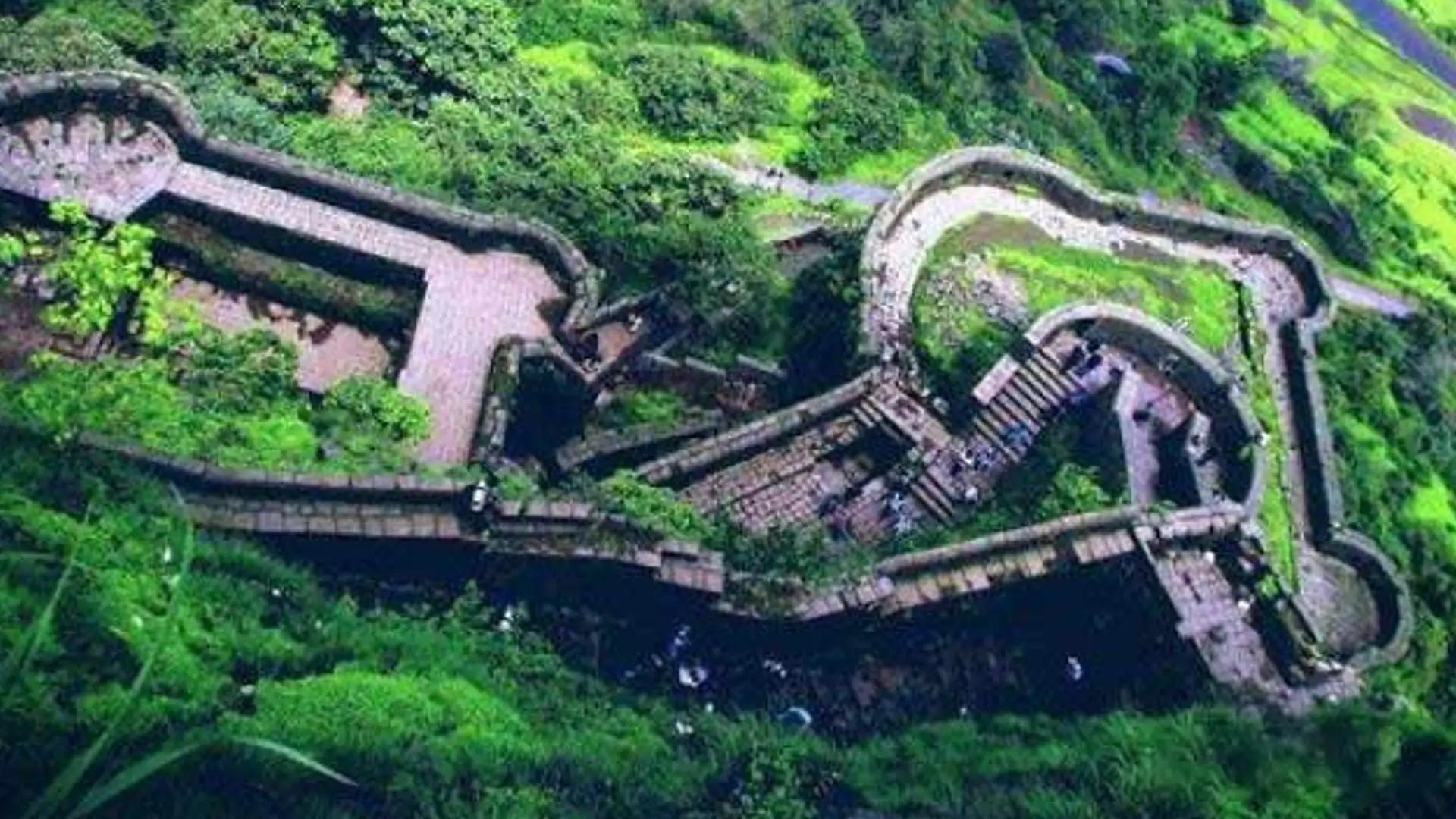
Torna Fort
Torna Fort, also known as Prachandagad, is a majestic hill fort located in Pune district, Maharashtra, India. Standing tall at an elevation of 1,403 meters (4,603 feet) above sea level, it is the highest hill fort in Pune district and a prominent landmark in the Sahyadri mountain range. Its strategic location and historical significance make it a popular destination for trekkers, history buffs, and nature enthusiasts alike.
Historical Significance
Torna Fort holds a pivotal position in Maratha history. In 1646, at the young age of 16, Chhatrapati Shivaji Maharaj, the founder of the Maratha Empire, captured this formidable fort, marking a turning point in his quest for independence. This victory established Shivaji’s military prowess and laid the foundation for the Maratha Empire’s rise to power.
Architectural Features
Torna Fort boasts a well-preserved structure, showcasing the architectural brilliance of its era. The fort’s fortifications, comprising strong walls, bastions, and gateways, stand as a testament to its defensive capabilities. Within the fort’s walls, there are various structures, including temples, granaries, and water cisterns, providing insights into the fort’s daily life.
Trekking to Torna Fort
Torna Fort offers a challenging yet rewarding trekking experience. The trek typically starts from the village of Velhe, located at the base of the hill. The ascent involves traversing a well-defined trail, passing through dense forests and rocky outcrops. The final stretch to the summit involves climbing a series of rock-cut steps, known as the ‘Chakan Path.’
Best Time to Visit
The ideal time to visit Torna Fort is during the winter months, from October to March, when the weather is pleasant and the skies are clear. The monsoon season, from June to September, can be challenging due to heavy rains and slippery trails.
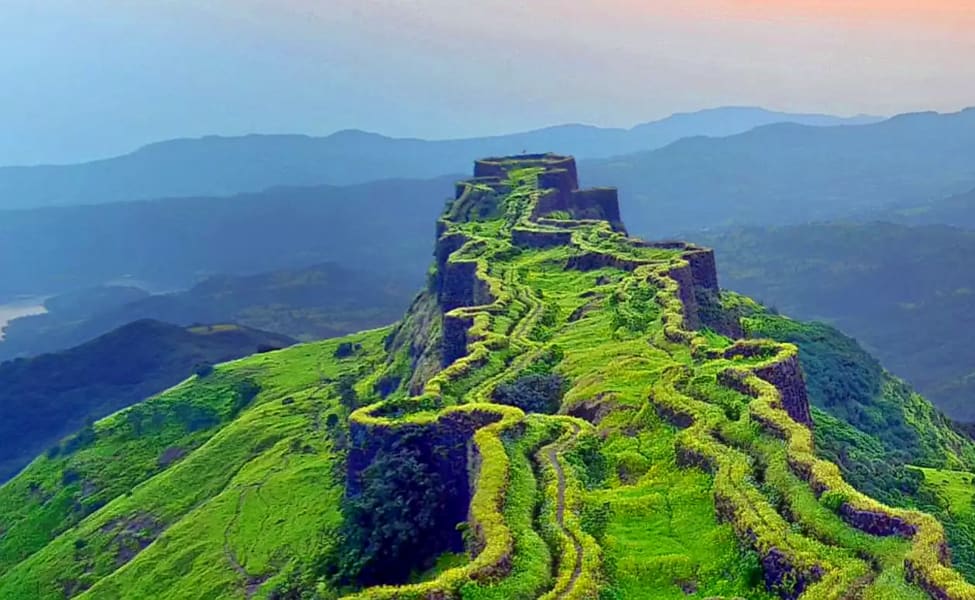
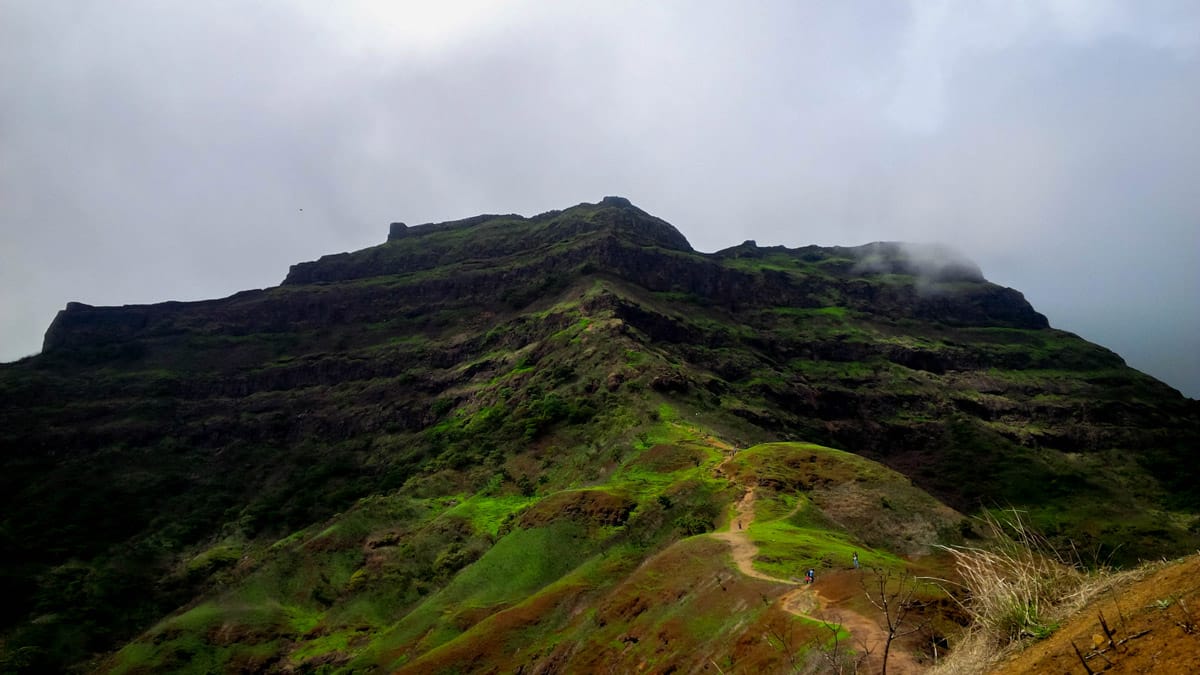
Harishchandragad Fort
Nestled amidst the Sahyadri mountains of Maharashtra, India, Harishchandragad stands as a majestic testament to history and nature’s grandeur. This ancient hill fort, towering over the landscape at an elevation of 4,670 feet, has captivated the hearts of adventurers and history enthusiasts for centuries.
Historical Significance
Harishchandragad’s origins can be traced back to the 6th century, during the reign of the Kalachuri dynasty. The fort’s strategic location, overlooking the Malshej Ghat, made it a crucial stronghold for controlling the region’s trade routes and guarding against invaders. Over the years, the fort witnessed numerous battles, passing through the hands of various rulers, including the Mughals and the Marathas.
Trekking Trails and Natural Beauty
Today, Harishchandragad is a popular trekking destination, attracting enthusiasts from all over the country. The fort offers two main trekking routes: the Junnar Gate route and the Nalichi Wat route. Both routes provide a challenging yet rewarding experience, taking trekkers through dense forests, across rugged terrain, and up steep inclines.
The fort’s summit boasts breathtaking views of the surrounding hills, valleys, and the glistening waters of the Bhandardara Lake. The serene atmosphere and the tranquility of the mountains provide a welcome respite from the hustle and bustle of city life.
Points of Interest
- Harishchandra Temple: Dedicated to Lord Shiva, this temple is believed to have been constructed during the 11th century.
- Kedareshwar Cave: This cave temple houses an idol of Lord Shiva and offers scenic views of the surroundings.
- Taramati and Rohidas Peaks: These two peaks are named after legendary characters from the story of Raja Harishchandra.
- Saptatheertha Pushkarni: This ancient water tank is said to have medicinal properties.
Best Time to Visit
The ideal time to visit Harishchandragad is during the monsoon season (June to September) when the waterfalls are in full flow and the greenery is at its peak. However, the fort can also be visited during the winter months (October to March) when the weather is pleasant and sunny.


Pratapgad Fort
Pratapgad Fort is a mountain fort located in Satara district, in the Western Indian state of Maharashtra. The fort is situated 24 kilometres (15 mi) from the Mahabaleshwar hill station. The fort is now a popular tourist destination.
History
The fort was built by the Maratha king Chhatrapati Shivaji Maharaj in 1656. The fort was the site of the Battle of Pratapgad in 1659, in which Shivaji’s forces defeated the Bijapur Sultanate general Afzal Khan. This battle was a major turning point in Shivaji’s career, and it helped to establish him as a powerful military leader.
Architecture
The fort is built on a spur of the Sahyadri Mountains, and it is surrounded by dense forests. The fort is approximately 3,543 feet (1,080 m) above sea level. The fort has a number of bastions, and it is well-defended.
Places of Interest
- The temple of Bhavani, which was built by Shivaji
- The samadhi (tomb) of Afzal Khan
- The Pratapgad Museum, which houses a collection of artifacts related to the fort and the Battle of Pratapgad
Best Time to Visit
The fort is open for visitors throughout the year. The best time to visit is during the winter months, when the weather is pleasant.

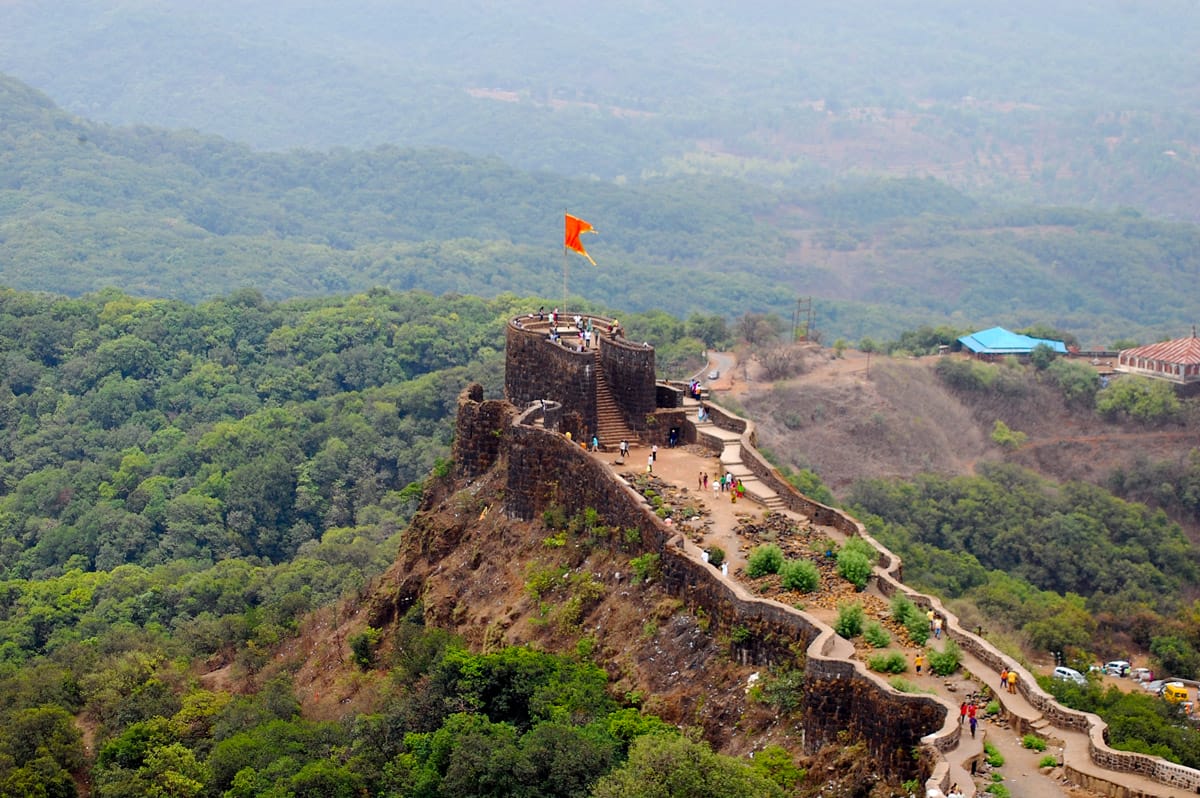
Purandar Fort
Purandar Fort is a majestic mountain fort situated in the Pune district of Maharashtra, India. It stands tall at an impressive elevation of 1,374 meters (4,508 feet) above sea level, nestled amidst the Sahyadri Mountains. The fort holds significant historical importance, having witnessed pivotal moments in the rise and fall of the Maratha Empire.
Historical Significance
Purandar Fort has played a crucial role in shaping the history of Maharashtra. Its strategic location made it a prized possession for various rulers, including the Adilshahis, Mughals, and Marathas. In 1646, the legendary Maratha warrior, Chhatrapati Shivaji Maharaj, captured the fort, establishing it as a stronghold of the Maratha Empire.
Birthplace of Chhatrapati Sambhaji Maharaj
Purandar Fort gained further prominence as the birthplace of Chhatrapati Sambhaji Maharaj, the son of Chhatrapati Shivaji Maharaj. Sambhaji Maharaj went on to become the second Chatrapati of the Maratha Empire, known for his bravery and strategic brilliance.
Architectural Marvel
Purandar Fort is not only steeped in history but also boasts remarkable architectural features. Its sturdy fortifications, intricate carvings, and well-planned layout showcase the remarkable engineering prowess of the era. The fort comprises two distinct sections: the lower Machi and the upper Balekilla.
Purandar Fort has emerged as a popular tourist destination, attracting visitors from all over the world. Its historical significance, breathtaking views, and challenging trek make it a captivating destination for history enthusiasts, nature lovers, and adventure seekers alike.
Visiting Information
Purandar Fort is open for visitors from 11:00 AM to 4:00 PM on all days of the week. The entrance fee is minimal, and visitors must carry a valid identity card. It is recommended to wear comfortable shoes and carry adequate water for the trek.
Purandar Fort stands as a testament to the rich history and architectural heritage of Maharashtra. Its enduring legacy continues to inspire and fascinate generations of visitors.
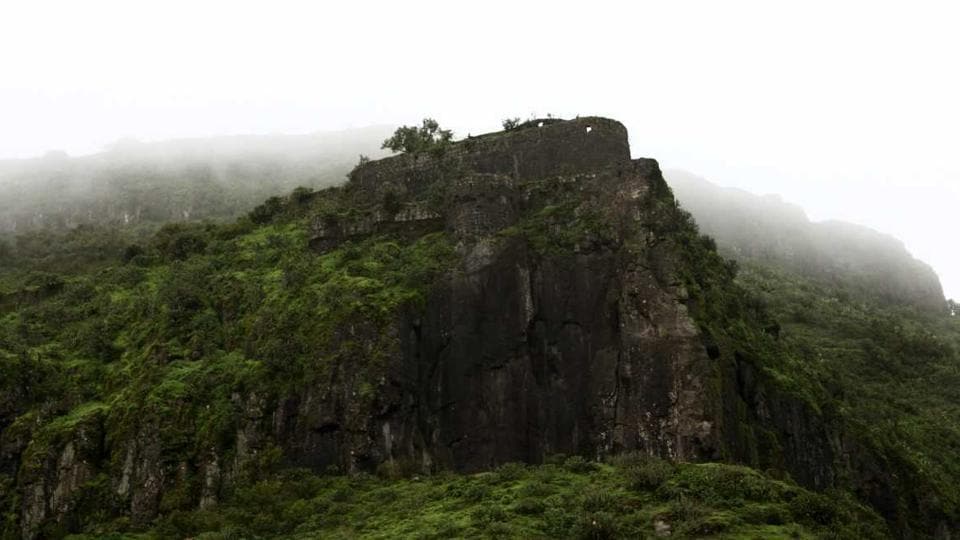
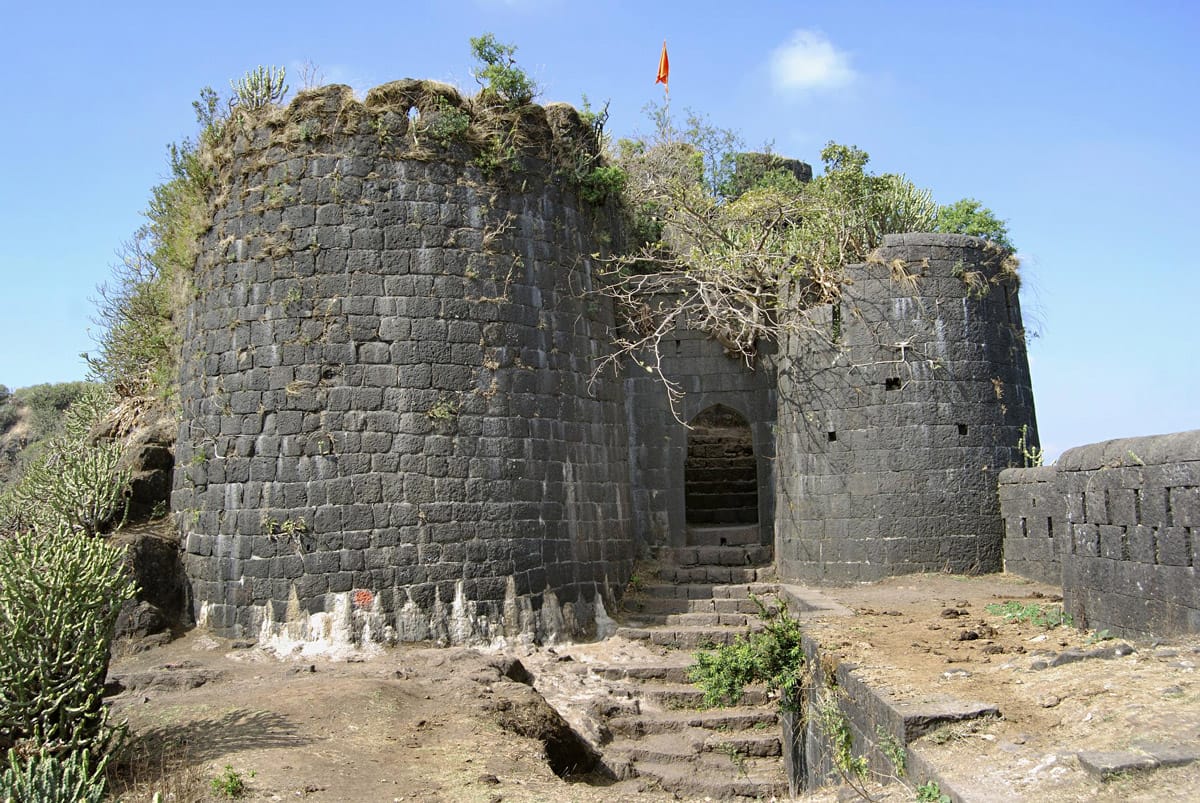
Sindhudurg Fort
Sindhudurg Fort is an imposing maritime fortress located on an island in the Arabian Sea, just off the coast of Malvan in the Konkan region of Maharashtra, India. It was built by the legendary Maratha warrior-king, Chhatrapati Shivaji Maharaj, in 1664-1667. The fort’s strategic location, formidable defenses, and historical significance make it a popular tourist destination and a symbol of Maratha valor.
History and Significance
Sindhudurg Fort was constructed as a strategic stronghold to protect Maratha territory from the growing influence of the Portuguese, Dutch, English, and Siddi pirates who operated along the western coast of India. The fort’s construction was overseen by Hiroji Indulkar, a skilled Maratha engineer, and was completed in three years.
Sindhudurg played a crucial role in the Maratha navy’s dominance of the Konkan coast, thwarting enemy attacks and safeguarding trade routes. It also served as a base for Shivaji’s naval expeditions against the Portuguese and Siddi fleets. The fort’s strategic importance and historical significance have earned it the status of a protected monument.
Architectural Features and Layout
Sindhudurg Fort is a magnificent example of 17th-century Maratha military architecture. It is spread over an area of 48 acres and boasts a formidable perimeter wall, bastions, ramparts, watchtowers, and underground passages. The fort’s entrance, known as the Dilli Darwaja, is strategically hidden from view, making it difficult for enemies to locate.
Within the fort’s confines, there are several notable structures, including temples dedicated to Goddess Bhavani, Lord Hanuman, and Jarimari. A unique feature of Sindhudurg Fort is the presence of Chhatrapati Shivaji Maharaj’s handprints and footprints embedded on a slab within the fort.
Visiting Sindhudurg Fort
Sindhudurg Fort is accessible by boat from the coastal town of Malvan. The fort is open to visitors from 8:00 AM to 5:30 PM daily. Visitors can explore the fort’s ramparts, bastions, and temples, and enjoy panoramic views of the Arabian Sea and the surrounding landscape.
Sindhudurg Fort is a must-visit destination for history enthusiasts, architecture aficionados, and those seeking a glimpse into the legacy of Chhatrapati Shivaji Maharaj. Its imposing presence, rich history, and stunning setting make it a truly captivating landmark.
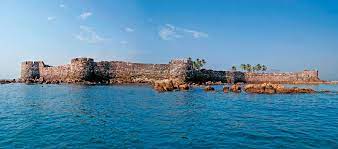
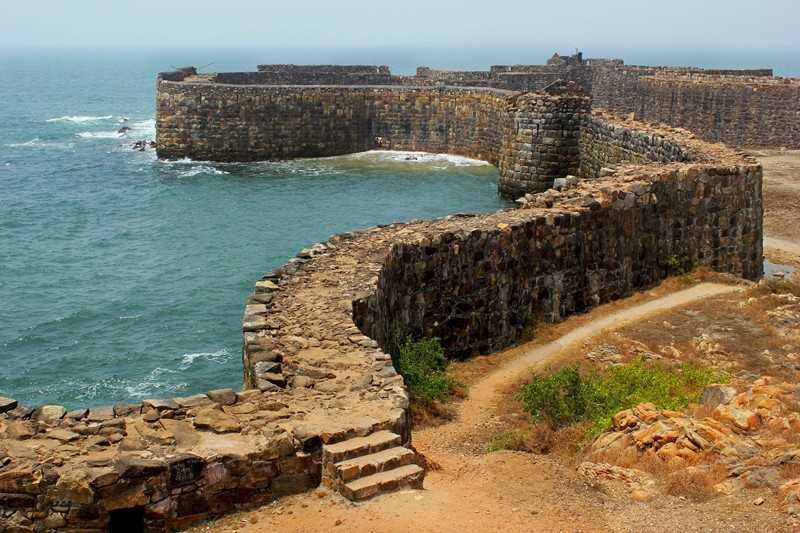
Murud-Janjira Fort
Murud-Janjira Fort, also known simply as Janjira Fort, is a majestic island fortress situated off the coastal town of Murud in the Raigad district of Maharashtra, India. Renowned for its unique architectural design and unwavering resilience, Janjira Fort has proudly stood the test of time, earning its reputation as one of India’s most formidable coastal fortifications.
Historical Significance
The origins of Janjira Fort can be traced back to the 14th century when it served as a stronghold for the Siddi dynasty, a powerful naval force of African descent. Over the centuries, the fort witnessed numerous sieges and battles, yet it never fell under the control of any invading power. This remarkable feat is attributed to the fort’s strategic location, intricate defenses, and the valiant resistance of its defenders.
Architectural Marvel
Perched atop a rocky islet amidst the shimmering Arabian Sea, Janjira Fort is an architectural marvel that showcases a harmonious blend of Indian and African influences. The fort’s oval-shaped walls, constructed from laterite and basalt, rise to an impressive height of 40 feet, adorned with 19 rounded bastions or porches. These bastions, once equipped with powerful cannons, served as a formidable deterrent against approaching adversaries.
Visiting the Fort
Today, Janjira Fort stands as a testament to India’s rich maritime heritage and attracts visitors from all over the world. To reach the fort, visitors can embark on a short boat ride from the coastal village of Rajapuri. Upon arrival, prepare to be captivated by the fort’s imposing presence and embark on an exploration of its many wonders.
Key Attractions
- The majestic main entrance, concealed from view until one is within close proximity, hints at the fort’s strategic design.
- The three colossal cannons – Kalal Bangadi, Chavri, and Landa Kasam – stand as symbols of the fort’s defensive prowess.
- The fort’s interior, a maze of narrow passages and hidden chambers, offers glimpses into the lives of its past inhabitants.
- The panoramic views from the fort’s ramparts provide a breathtaking perspective of the surrounding coastline and the Arabian Sea.
A visit to Janjira Fort is an unforgettable journey into India’s past, offering a glimpse into the lives of warriors, sailors, and rulers who shaped the region’s maritime history. The fort’s enduring legacy serves as a reminder of the power of resilience, innovation, and the enduring spirit of human endeavor.
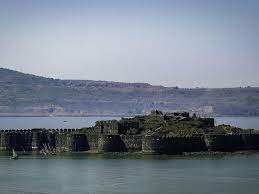

Lohagad Fort
Lohagad Fort is a majestic hill fort situated in the Sahyadri hills of Maharashtra, India. It is located near the hill station of Lonavala and stands at an impressive elevation of 1,033 meters (3,389 feet) above sea level. The fort’s name, Lohagad, translates to “Iron Fort,” alluding to its impenetrable and sturdy construction.
History of Lohagad Fort
The initial construction of Lohagad Fort is attributed to the Lohtamia dynasty, who ruled the region during the 10th century CE. Over the centuries, the fort has witnessed several battles and changes in ownership, passing through the hands of various rulers, including the Mughals and the Marathas. In 1648, the legendary Maratha warrior Chhatrapati Shivaji Maharaj captured the fort, making it a strategic stronghold for his kingdom.
Architectural Features of Lohagad Fort
Lohagad Fort is a testament to the architectural prowess of its builders. The fort’s fortifications are designed to withstand attacks, with sturdy walls, bastions, and three distinct gates: the Tal Killa (Main Gate), the Darwaja (Second Gate), and the Winchukalyan Darwaja (Scorpion’s Tail Gate).
Within the fort’s walls lie several structures that offer a glimpse into its rich history. These include water cisterns, temples, granaries, and armories. The fort also features a unique natural formation known as the ‘Lohagadachi Winchukalyan’ (Scorpion’s Tail), a narrow rock formation that resembles a scorpion’s tail.
Trekking to Lohagad Fort
Lohagad Fort is a popular trekking destination, offering a moderate-level trek through the scenic Sahyadri hills. The trek typically takes around 2-3 hours to complete, with well-defined trails leading to the fort’s summit. The panoramic views from the top are truly breathtaking, encompassing the surrounding hills, valleys, and the Pavana Lake.
Best Time to Visit Lohagad Fort
The best time to visit Lohagad Fort is during the monsoon season (June-September) when the surrounding hills are lush and green. However, the fort can be visited throughout the year, except during the peak summer months (March-May) when the heat can be intense.
Lohagad Fort stands as a symbol of Maharashtra’s rich history and architectural heritage. Its imposing structure, coupled with its scenic location, makes it a must-visit destination for history enthusiasts, nature lovers, and adventure seekers alike.
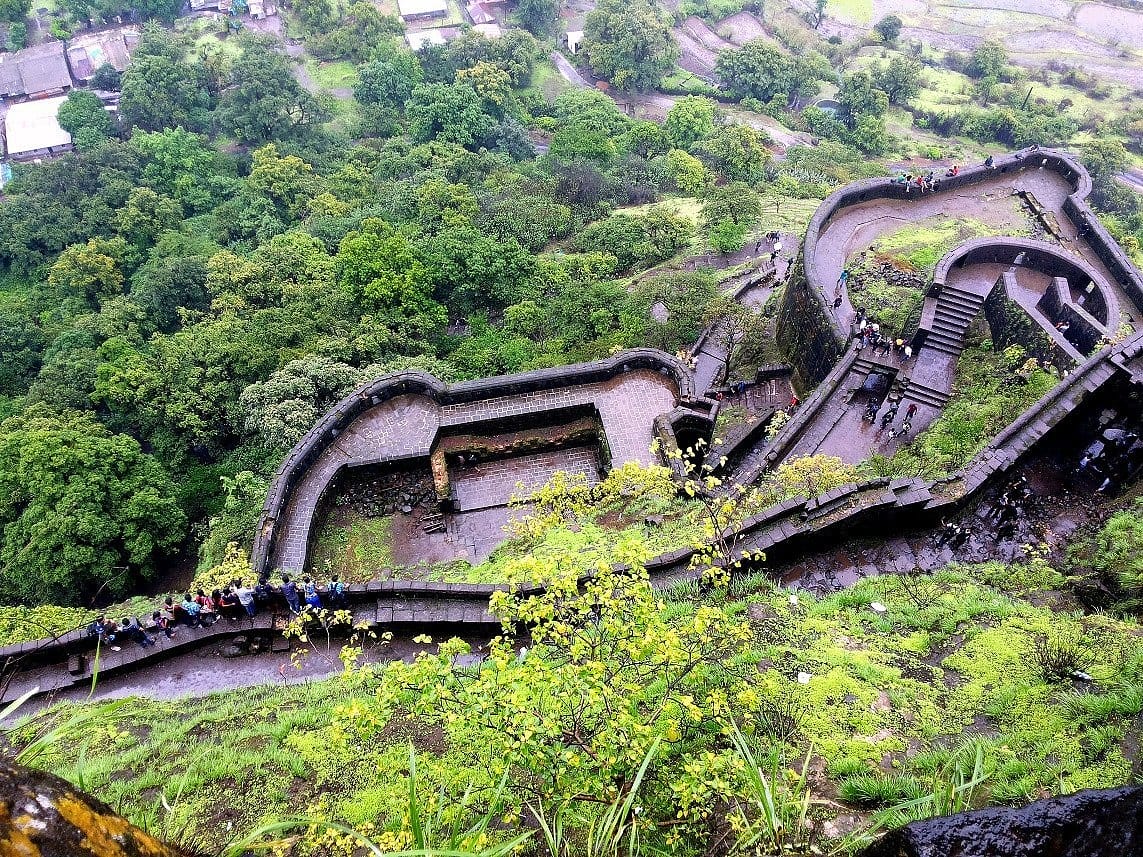
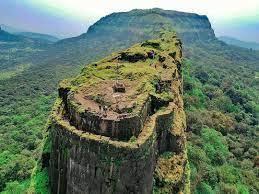
Panhala Fort
Panhala Fort (also known as Panhalgad and Panhalla, literally “the home of serpents”) is a majestic hill fort situated in Panhala, 20 kilometers northwest of Kolhapur in Maharashtra, India. It stands tall, strategically positioned overlooking a crucial pass in the Sahyadri mountain range, which served as a vital trade route connecting Bijapur in the interior of Maharashtra to the coastal regions. This strategic location made Panhala Fort the center of numerous skirmishes in the Deccan Plateau, involving the Marathas, the Mughals, and the British East India Company.
History
Panhala Fort’s construction dates back to the 12th century, between 1178 and 1209 CE. It was one of the 15 forts, including Bavda, Bhudargad, Satara, and Vishalgad, built by the Shilahara ruler Bhoja II. An anecdote associated with this fort is the aphorism “Kahaan Raja Bhoj, kahan Gangu Teli,” which laments the decline in greatness and the rise of the ordinary. A copper plate discovered in Satara indicates that Raja Bhoja held court at Panhala from 1191 to 1192 CE. Around 1209-10, Bhoja Raja was defeated by Singhana (1209-1247), the most powerful of the Devgiri Yadavas, leading to the fort’s transfer to Yadava control.
Strategic Significance
Panhala Fort’s strategic importance stems from its commanding position overlooking the crucial pass in the Sahyadri mountains. This pass served as a vital trade route connecting Bijapur in the interior of Maharashtra to the coastal regions. Controlling this pass meant controlling the flow of goods and people, giving the fort’s holder significant economic and military power.
Maratha Era
Panhala Fort played a pivotal role in the rise and fall of the Maratha Empire. Chhatrapati Shivaji Maharaj, the founder of the Maratha Empire, recognized the fort’s strategic value and captured it in 1673. Panhala Fort served as the Maratha capital for a significant period, and Shivaji spent over 500 days within its walls, more than any other fort except his childhood homes.
Notable Events
Panhala Fort witnessed numerous battles and events that shaped the history of the Deccan Plateau. The most famous of these is the Battle of Pavan Khind, fought in 1660 between a small Maratha force led by Baji Prabhu Deshpande and a much larger Mughal army. Baji Prabhu and his valiant soldiers held back the Mughal army for an entire day, allowing Shivaji to escape to Vishalgad.
Present Status
Today, Panhala Fort stands as a magnificent testament to its rich history. It is a popular tourist destination, attracting visitors from all over India and beyond. The fort’s imposing walls, numerous bastions, and grand palaces offer a glimpse into the grandeur of the Maratha era. The fort also houses several temples and other historical structures, making it a site of cultural and religious significance.
Panhala Fort is a must-visit for anyone interested in Indian history, particularly the Maratha era. Its strategic location, rich history, and well-preserved structures make it a captivating destination that provides a unique insight into the past.
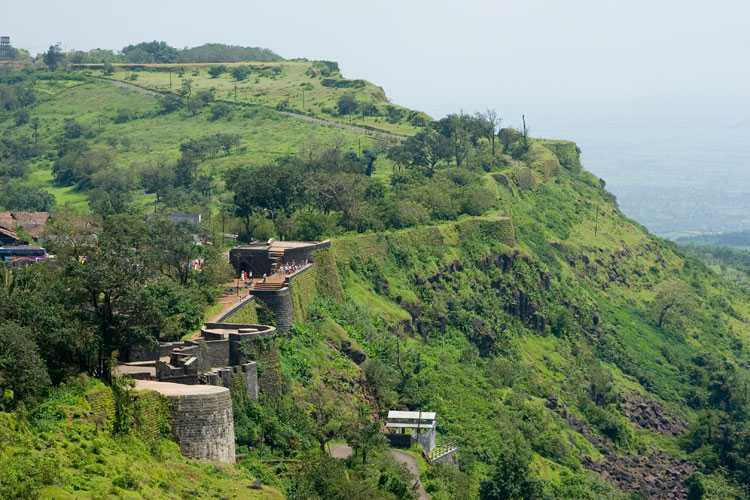
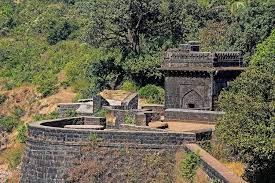
Rajmata jijau mahotsav
Ceremony of rajmata jijau janmotsav is celebrated in the month of January every year. Jijamata ( rajmata jijau) was born on 12 january in 1598 at sindhkhed in buldhana district. She was the mother of chhatrapati shivaji maharaj, the founder of the hindavi swarajya . this festival is celebrated not only as this is a birthplace of rajmata jijau but also for her invaluable teachings of courage & valour which led to the hindavi swarajya.

